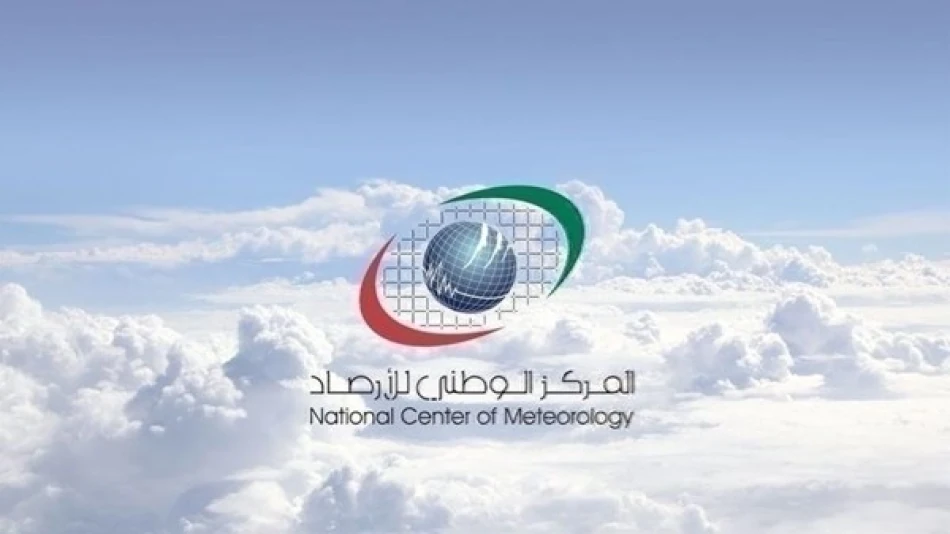
UAE Braces for Seasonal Indian Monsoon Spillover in August
UAE Braces for Scorching August as Monsoon Patterns Drive Extreme Heat and Rainfall
The UAE's National Center of Meteorology warns that August will continue July's punishing heat wave, with the Indian monsoon system pushing temperatures above 40°C while simultaneously triggering intense rainfall in mountainous regions. This weather pattern reflects broader climate shifts affecting the Gulf region, with implications for energy consumption, infrastructure planning, and economic activity across the Emirates.
Monsoon System Dominates August Weather Patterns
The Indian seasonal monsoon continues to influence UAE weather throughout August, extending the thermal conditions that made July particularly challenging. The monsoon's reach, combined with thermal depressions from the southwest, creates a complex weather system that drives both extreme heat and precipitation.
The eastern mountains play a crucial role in this dynamic, amplifying daytime temperatures and creating conditions for cumulus cloud formation. These clouds bring rainfall to interior regions, creating stark contrasts between scorching desert areas and rain-soaked mountain zones.
Inter-Tropical Convergence Zone Adds Complexity
During the first half of August, the Inter-Tropical Convergence Zone (ITCZ) extends its influence over parts of the UAE. This meteorological phenomenon, which typically brings seasonal rains to tropical regions, occasionally generates rain-bearing cumulus clouds over the Emirates.
The interaction between these global weather systems and local geography creates unpredictable conditions that challenge both residents and infrastructure systems designed for more stable climate patterns.
Wind Patterns and Humidity Levels Shift Throughout the Month
August weather is characterized by distinct daily wind cycles that significantly impact comfort levels and air quality. The land-sea breeze cycle dominates, bringing southeastern winds during nights and mornings, while northern winds prevail during daylight hours.
Active southern winds, particularly strong during morning hours, can stir up dust storms that reduce visibility and air quality. Northwestern winds also intensify periodically, adding another variable to the complex weather equation.
Humidity levels increase slightly compared to July, reaching an average of 47% with noticeable peaks during morning and evening hours. This rise in moisture content, while modest, significantly amplifies the perceived temperature and discomfort levels.
Historical Data Reveals Extreme Temperature Records
Meteorological records paint a picture of August as one of the UAE's most challenging months. Average temperatures range between 34.7°C and 36.5°C, but maximum temperatures regularly exceed 40°C, reaching between 40.9°C and 43.2°C.
The record high of 51.4°C was recorded in Mezaira in 2017, demonstrating the extreme conditions possible during peak summer months. Conversely, the lowest recorded temperature of 16.1°C occurred on Jabal Mabrah in 2013, highlighting the dramatic temperature variations possible across the country's diverse topography.
Wind and Precipitation Extremes
Wind patterns show average speeds of 12 km/hour, but extreme weather events can drive gusts to dangerous levels. The highest recorded wind gust reached 127.8 km/hour in Al Hayr in 2023, indicating the potential for severe weather events during this period.
Rainfall, while not typical for desert regions, can be substantial when it occurs. The record rainfall of 100.4mm fell on Hameem in 2013, demonstrating how monsoon influences can occasionally deliver significant precipitation to typically arid areas.
Economic and Infrastructure Implications
These weather patterns carry significant economic consequences for the UAE. Energy consumption peaks during August as air conditioning systems work overtime to combat extreme heat and humidity. This surge in demand tests the electrical grid and drives up operational costs for businesses and residents.
The combination of extreme heat and sudden rainfall events also challenges infrastructure resilience. Roads, buildings, and transportation systems must cope with thermal expansion during scorching days and potential flooding during intense rainfall events.
For investors and businesses, August weather patterns influence everything from construction schedules to retail activity. The aviation sector faces particular challenges, as extreme heat affects aircraft performance and passenger comfort, while sudden weather changes can disrupt flight operations.
Regional Climate Context
The UAE's August weather reflects broader regional climate trends affecting the Arabian Peninsula. Similar patterns impact neighboring countries like Saudi Arabia and Oman, though the UAE's coastal geography and urban development create unique microclimates.
Compared to other Gulf states, the UAE's weather monitoring and forecasting capabilities provide crucial advantages for economic planning and public safety. The detailed meteorological data enables more precise predictions and better preparation for extreme weather events.
As climate change continues to influence global weather patterns, the intensity and duration of these monsoon-influenced systems may evolve, making accurate forecasting and adaptive planning increasingly crucial for the Emirates' continued economic growth and livability.
 Layla Al Mansoori
Layla Al Mansoori







